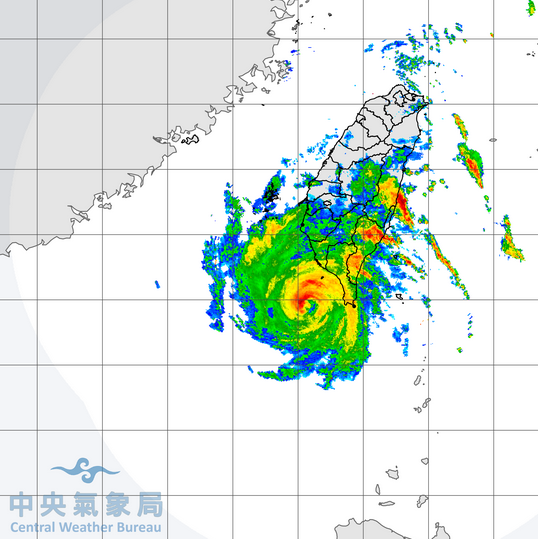A NOAA plane found that former Tropical Storm Eta had strengthened back into a hurricane on Wednesday morning. A Hurricane Watch was issued for a portion of the west coast of Florida that included Tampa and St. Petersburg. At 7:35 a.m. EST on Wednesday the center of Hurricane Eta was located at latitude 25.8°N and longitude 83.8°W which put it about 170 miles (280 km) south-southwest of Tampa, Florida. Eta was moving toward the north-northeast at 15 m.p.h. (24 km/h). The maximum sustained wind speed was 75 m.p.h. (120 km/h) and there were wind gusts to 90 m.p.h. (145 km/h). The minimum surface pressure was 983 mb.
A Hurricane Watch was issued for the portion of the coast from Anna Maria Island to Yankeetown, Florida. The Hurricane Watch included Tampa and St. Petersburg. A Tropical Storm Warning was issued for the portion of the coast from Bonita Beach to the Suwannee River, Florida. The Warning included Tampa and St. Petersburg. A Tropical Storm Warning was also in effect for the Dry Tortugas. A Tropical Storm Watch was issued for the portion of the coast from the Suwannee River to the Aucilla River, Florida.
Former Storm Eta strengthened back to a hurricane on Wednesday morning, but it appeared to be moving back into a pool of drier air over the Gulf of Mexico. Thunderstorms increased around the center of Eta when it was over the warm water in the Loop Current on Tuesday, but the thunderstorms were weakening on Wednesday morning. Thunderstorms near the center of Hurricane Eta were not as tall as they were on Tuesday. The strongest thunderstorms were occurring in bands north and east of the center of Eta. Bands south and west of the center consisted primarily of showers and lower clouds. Winds to tropical storm force extended out 115 miles (185 km) on the eastern side of Hurricane Eta. Winds to tropical storm force extended out 50 miles in the western half of the circulation.
Hurricane Eta will move through an environment marginally favorable for intensification on Wednesday. Eta will move over water where the Sea Surface Temperature is near 27°C. An upper level trough over the central U.S. will produce southwesterly winds which blow toward the top of Eta’s circulation on Wednesday. Those winds will cause vertical wind shear, but the shear may not be strong enough to prevent Eta from getting stronger. The drier air over the Gulf of Mexico will limit intensification. Hurricane Eta is not likely to intensify much more on Wednesday because of the drier air. The upper level trough will move closer to Eta on Thursday and the wind shear will increase. The shear and drier air will cause Eta to weaken after it makes landfall on the west coast of Florida.
The upper level trough will steer Hurricane Eta toward the north-northeast during the next 24 to 36 hours. On its anticipated track the center of Hurricane Eta could approach Tampa on Wednesday night. The center of Eta is forecast to pass just to the west of Tampa and make landfall north of Tampa. Eta could be near hurricane strength when it passes near Tampa. Southwesterly winds blowing around the east side of Tropical Storm Eta could push water into Tampa Bay. Eta could cause a storm surge of up to 7 feet (2 meters). Hurricane Eta will also drop heavy rain over Central Florida. Floods could occur in that area. Eta could also cause widespread power outages in Central Florida.
Elsewhere over the Atlantic Ocean, Tropical Storm Theta churned southwest of the Azores. At 4:00 a.m. EST on Wednesday the center of Tropical Storm Theta was located at latitude 29.4°N and longitude 34.7°W which put it about 740 miles (1190 km) southwest of the Azores. Theta was moving toward the east-northeast at 8 m.p.h. (13 km/h). The maximum sustained wind speed was 65 m.p.h. (105 km/h) and there were wind gusts to 80 m.p.h. (130 km/h). The minimum surface pressure was 989 mb.

